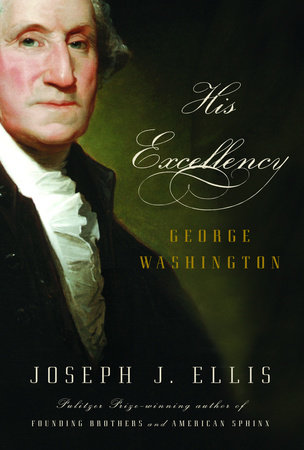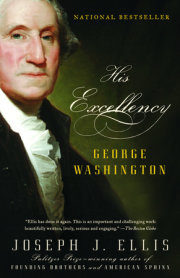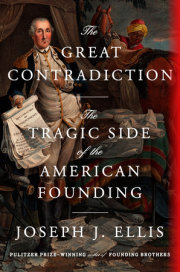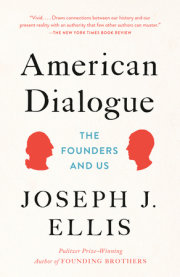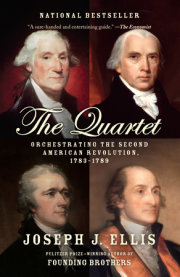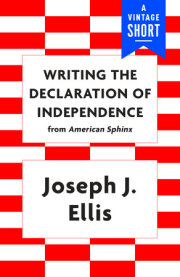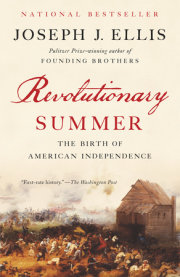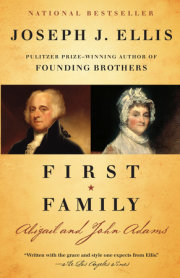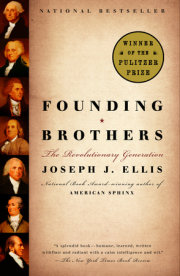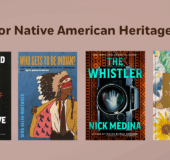Chapter One
Interior Regions History first noticed George Washington in 1753, as a daring and resourceful twenty-one-year-old messenger sent on a dangerous mission into the American wilderness. He carried a letter from the governor of Virginia, Robert Dinwiddie, addressed to the commander of French troops in that vast region west of the Blue Ridge Mountains and south of the Great Lakes that Virginians called the Ohio Country. He was ordered to lead a small party over the Blue Ridge, then across the Allegheny Mountains, there to rendezvous with an influential Indian chief called the Half-King. He was then to proceed to the French outpost at Presque Isle (present-day Erie, Pennsylvania), where he would deliver his message “in the Name of His Britanic Majesty.” The key passage in the letter he was carrying, so it turned out, represented the opening verbal shot in what American colonists would call the French and Indian War: “The Lands upon the river Ohio, in the Western Parts of the Colony of Virginia, are so notoriously known to be the Property of the Crown of Great Britain, that it is a Matter of equal Concern & Surprize to me, to hear that a Body of French Forces are erecting Fortresses, & making Settlements upon that River within his Majesty’s Dominions.”
The world first became aware of young Washington at this moment, and we get our first extended look at him, because, at Dinwiddie’s urging, he published an account of his adventures, The Journal of Major George Washington, which appeared in several colonial newspapers and was then reprinted by magazines in England and Scotland. Though he was only an emissary—the kind of valiant and agile youth sent forward against difficult odds to perform a hazardous mission—Washington’s Journal provided readers with a firsthand report on the mountain ranges, wild rivers, and exotic indigenous peoples within the interior regions that appeared on most European maps as dark and vacant spaces. His report foreshadowed the more magisterial account of the American West provided by Lewis and Clark more than fifty years later. It also, if inadvertently, exposed the somewhat ludicrous character of any claim by “His Britanic Majesty,” or any European power, for that matter, to control such an expansive frontier that simply swallowed up and spit out European presumptions of civilization.
Although Washington is both the narrator and the central character in the story he tells, he says little about himself and nothing about what he thinks. “I have been particularly cautious,” he notes in the preface, “not to augment.” The focus, instead, is on the knee-deep snow in the passes through the Alleghenies, and the icy and often impassably swollen rivers, where he and his companions are forced to wade alongside their canoes while their coats freeze stiff as boards. Their horses collapse from exhaustion and have to be abandoned. He and fellow adventurer Christopher Gist come upon a lone warrior outside an Indian village ominously named Murdering Town. The Indian appears to befriend them, then suddenly wheels around at nearly point-blank range and fires his musket, but inexplicably misses. “Are you shot?” Washington asks Gist, who responds that he is not. Gist rushes the Indian and wants to kill him, but Washington will not permit it, preferring to let him escape. They come upon an isolated farmhouse on the banks of the Monongahela where two adults and five children have been killed and scalped. The decaying corpses are being eaten by hogs.
In stark contrast to the brutal conditions and casual savagery of the frontier environment, the French officers whom Washington encounters at Fort Le Boeuf and Presque Isle resemble pieces of polite Parisian furniture plopped down in an alien landscape. “They received us with a great deal of complaisance,” Washington observes, the French offering flattering pleasantries about the difficult trek Washington’s party had endured over the mountains. But they also explained that the claims of the English king to the Ohio Country were demonstrably inferior to those of the French king, which were based on Lasalle’s exploration of the American interior nearly a century earlier. To solidify their claim of sovereignty, a French expedition had recently sailed down the Ohio River, burying a series of lead plates inscribed with their sovereign’s seal that obviously clinched the question forever.
The French listened politely to Washington’s rebuttal, which derived its authority from the original charter of the Virginia Company in 1606. It had set the western boundary of that colony either at the Mississippi River or, even more expansively, at the Pacific Ocean. In either case, it included the Ohio Country and predated Lasalle’s claim by sixty years. However persuasive this rather sweeping argument might sound in Williamsburg or London, it made little impression on the French officers. “They told me,” Washington wrote in his Journal, “it was their absolute Design to take Possession of the Ohio, & by G they wou’d do it.” The French commander at Fort Le Boeuf, Jacques Le Gardner, sieur de Saint Pierre, concluded the negotiations by drafting a cordial letter for Washington to carry back to Governor Dinwiddie that sustained the diplomatic affectations: “I have made it a particular duty to receive Mr. Washington with the distinction owing to your dignity, his position, and his own great merit. I trust that he will do me justice in that regard to you, and that he will make known to you the profound respect with which I am, Sir, your most humble and most obedient servant.”
But the person whom Washington quotes more than any other in his Journal represented yet a third imperial power with its own exclusive claim of sovereignty over the Ohio Country. That was the Half-King, the Seneca chief whose Indian name was Tanacharison. In addition to being a local tribal leader, the Half-King had received his quasi-regal English name because he was the diplomatic representative of the Iroquois Confederation, also called the Six Nations, with its headquarters in Onondaga, New York. When they had first met at the Indian village called Logstown, Tanacharison had declared that Washington’s Indian name was Conotocarius, which meant “town taker” or “devourer of villages,” because this was the name originally given to Washington’s great-grandfather, John Washington, nearly a century earlier. The persistence of that memory in Indian oral history was a dramatic reminder of the long-standing domination of the Iroquois Confederation over the region. They had planted no lead plates, knew nothing of some English king’s presumptive claims to own a continent. But they had been ruling over this land for about three hundred years.
In the present circumstance, Tanacharison regarded the French as a greater threat to Indian sovereignty. “If you had come in a peaceable Manner like our Brethren the English,” he told the French commander at Presque Isle, “We shou’d not have been against your trading with us as they do, but to come, Fathers, & build great houses upon our Land, & to take it by Force, is what we cannot submit to.” On the other hand, Tanacharison also made it clear that all Indian alliances with European powers and their colonial kinfolk were temporary expediencies: “Both you & the English are White. We live in a Country between, therefore the Land does not belong either to one or the other; but the GREAT BEING above allow’d it to be a Place of Residence for us.”
Washington dutifully recorded Tanacharison’s words, fully aware that they exposed the competing, indeed contradictory, imperatives that defined his diplomatic mission into the American wilderness. For on the one hand he represented a British ministry and a colonial government that fully intended to occupy the Ohio Country with Anglo-American settlers whose presence was ultimately incompatible with the Indian version of divine providence. But on the other hand, given the sheer size of the Indian population in the region, plus their indisputable mastery of the kind of forest-fighting tactics demanded by wilderness conditions, the balance of power in the looming conflict between France and England for European domination of the American interior belonged to the very people whom Washington’s superiors intended to displace.
For several reasons, this story of young Washington’s first American adventure is a good place to begin our quest for the famously elusive personality of the mature man-who-became-a-monument. First, the story reveals how early his personal life became caught up in larger public causes, in this case nothing less grand than the global struggle between the contending world powers for supremacy over half a continent. Second, it forces us to notice the most obvious chronological fact, namely that Washington was one of the few prominent members of America’s founding generation—Benjamin Franklin was another—who were born early enough to develop their basic convictions about America’s role in the British Empire within the context of the French and Indian War. Third, it offers the first example of the interpretive dilemma posed by a man of action who seems determined to tell us what he did, but equally determined not to tell us what he thought about it. Finally, and most importantly, it establishes a connection between Washington’s character in the most formative stage of its development and the raw, often savage, conditions in that expansive area called the Ohio Country. The interior regions of Washington’s personality began to take shape within the interior regions of the colonial frontier. Neither of these places, it turned out, was as vacant as it first appeared. And both of them put a premium on achieving mastery over elemental forces that often defied the most cherished civilized expectations.
Glimpses
Before 1753 we have only glimpses of Washington as a boy and young man. These sparsely documented early years have subsequently been littered with legends and lore, all designed to align Washington’s childhood with either the dramatic achievements of his later career or the mythological imperatives of America’s preeminent national hero. John Marshall, his first serious biographer, even entitled the chapter on Washington’s arrival in the world “The Birth of Mr. Washington,” suggesting that he was born fully clothed and ready to assume the presidency. The most celebrated story about Washington’s childhood—the Parson Weems tale about chopping down the cherry tree (“Father, I cannot tell a lie”)—is a complete fabrication. The truth is, we know virtually nothing about Washington’s relationship with his father, Augustine Washington, except that it ended early, when Washington was eleven years old. In all his voluminous correspondence, Washington mentioned his father on only three occasions, and then only cryptically. As for his mother, Mary Ball Washington, we know that she was a quite tall and physically strong woman who lived long enough to see him elected president but never extolled or even acknowledged his public triumphs. Their relationship, estranged in those later years, remains a mystery during his childhood and adolescence. Given this frustrating combination of misinformation and ignorance, we can only establish the irrefutable facts about Washington’s earliest years, then sketch as best we can the murkier patterns of influence on his early development.
We know beyond any doubt that George Washington was born in Westmoreland County, Virginia, near the banks of the Potomac River, on February 22, 1732 (New Style). He was a fourth-generation Virginian. The patriarch of the family, John Washington, had come over from England in 1657 and established the Washingtons as respectable, if not quite prominent, members of Virginia society. The Indians had named him “town taker,” not because of his military prowess, but because he had manipulated the law to swindle them out of their land.
The bloodline that John Washington bequeathed to his descendants exhibited three distinctive tendencies: first, a passion for acreage, the more of it the better; second, tall and physically strong males; and third, despite the physical strength, a male line that died relatively young, all before reaching fifty. A quick scan of the genealogy on both sides of young George’s ancestry suggested another ominous pattern. The founder of the Washington line had three wives, the last of whom had been widowed three times. Washington’s father had lost his first wife in 1729, and Mary Ball Washington, his second wife, was herself an orphan whose own mother had been widowed twice. The Virginian world into which George Washington was born was a decidedly precarious place where neither domestic stability nor life itself could be taken for granted. This harsh reality was driven home in April 1743, when Augustine Washington died, leaving his widow and seven children an estate that included ten thousand acres divided into several disparate parcels and forty-nine slaves.
Washington spent his early adolescence living with his mother at Ferry Farm in a six-room farmhouse across the Rappahannock from Fredericksburg. He received the modern equivalent of a grade-school education, but was never exposed to the classical curriculum or encouraged to attend college at William and Mary, a deficiency that haunted him throughout his subsequent career among American statesmen with more robust educational credentials. Several biographers have called attention to his hand-copied list of 110 precepts from The Rules of Civility and Decent Behaviour in Company and Conversation, which was based on rules of etiquette originally composed by Jesuit scholars in 1595. Several of the rules are hilarious (#9, “Spit not into the fire . . . especially if there be meat before it”; #13, “Kill no vermin, or fleas, lice, ticks, etc. in the sight of others”); but the first rule also seems to have had resonance for Washington’s later obsession with deportment: “Every action done in company ought to be done with some sign of respect to those that are present.” As a reminder of an earlier era’s conviction that character was not just who you were but also what others thought you were, this is a useful point that foreshadows Washington’s flair for disappearing within his public persona. But the more prosaic truth is that Rules of Civility has attracted so much attention from biographers because it is one of the few documents of Washington’s youth that has survived. It is quite possible that he copied out the list as a mere exercise in penmanship.
The two major influences on Washington’s youthful development were his half brother, Lawrence, fourteen years his senior, and the Fairfax family. Lawrence became a surrogate father, responsible for managing the career options of his young protégé, who as a younger son had little hope of inheriting enough land to permit easy entrance into the planter class of Chesapeake society. In 1746, Lawrence proposed that young George enlist as a midshipman in the British navy. His mother opposed the suggestion, as did his uncle in England, who clinched the negative verdict by observing that the navy would “cut him and staple him and use him like a Negro, or rather, like a dog.”
Copyright © 2004 by Joseph J. Ellis. All rights reserved. No part of this excerpt may be reproduced or reprinted without permission in writing from the publisher.

